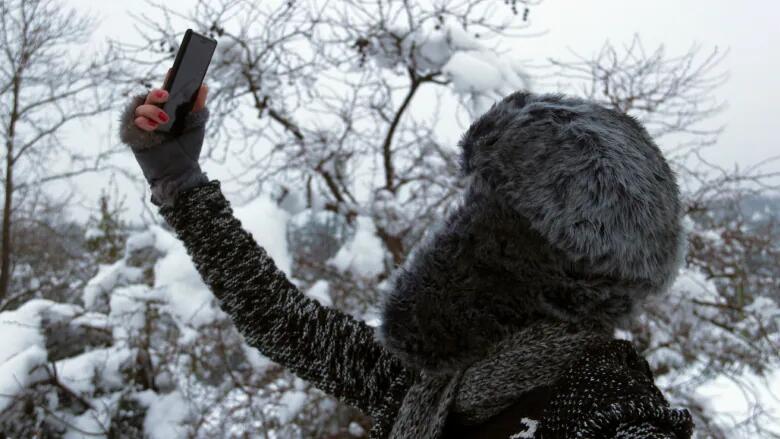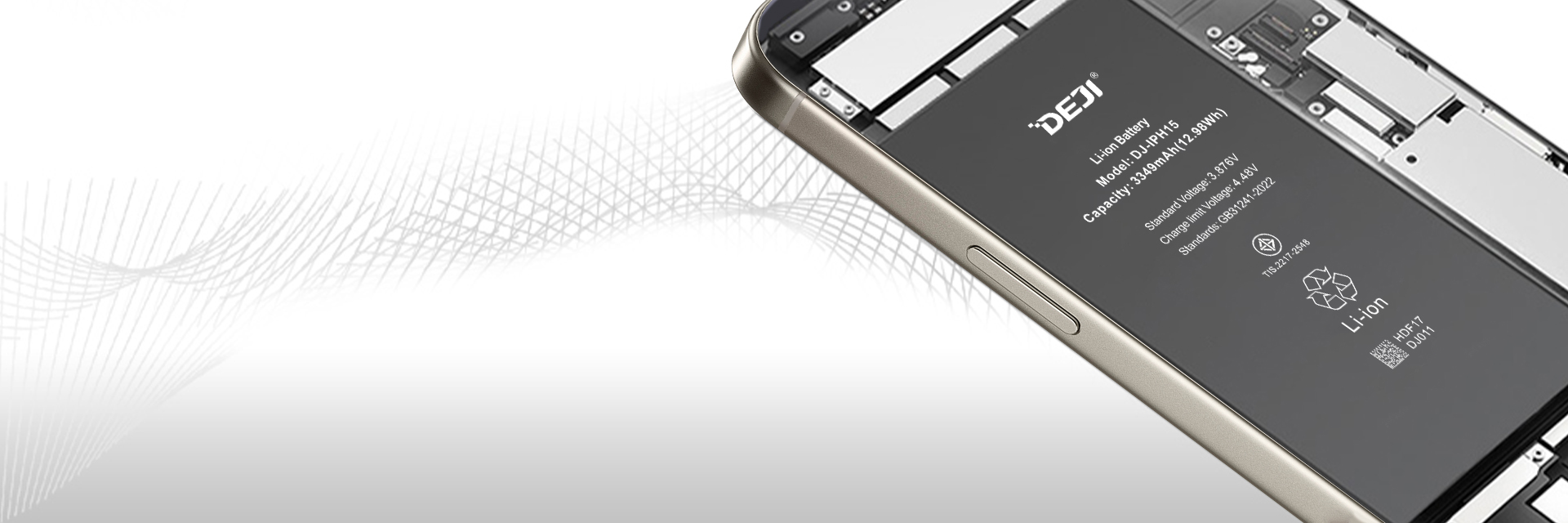Yes - Operating Temperature of the iPhone battery is: -5~60℃
In cold weather it run times are shorter when the battery is cold. When using your device in a very cold environment, you may notice a decrease in battery life, but this condition is temporary. Once the battery's temperature returns to its normal operating range, its performance will return to normal as well.
This in not only iPhone but all batteries in general.

Its not that they drain faster in cold, its that the batteries have less capacity available so they they go flat faster.The loss of capacity is sort of a result of less chemical activity under reduced temperatures; cold is almost universally a chemical reaction inhibitor, and batteries after all store electricity chemically.
Batteries lower their voltage at lower temperature. It is not that they are drained because if the temperature rises again while the phone is off then when turned on it will retain the original capacity.
Care to know why? Batteries build their voltage when electric charges diffuse via a boundary film known as separator. The battery voltage is the equilibrium between charges diffusing to the other pole of the battery and the voltage that repels the charges back to the original side. At lower temperature the charges speeds are lower thus fewer of them make it to the other side and the voltage is lower. Raise the temperature and the voltage returns to the original value.
The normal operating temperature of the iPhone is between 0°C and 35°C, and low or high temperatures may temporarily shorten battery life or cause the device to change behavior to regulate the temperature. Previously, a Dutch manufacturer placed the iPhone 5s battery in a freezer at minus 22°, and the iPhone 5s could still work normally. Recently, Cell Phone Repair and Toronto Global News conducted an experiment to study the power consumption of iPhone running in cold weather. They found that two identical devices consumed different amounts of power at different temperatures.
The tests used two identical iPhones, with one tested outdoors in the cold and the other in a warm room. After 30 minutes of use, the battery of the outdoor iPhone dropped from 100% to 86%, while the indoor one dropped by only 1%.
Joe Tersigni, managing partner of Cell Phone Repair, said that iPhone lithium batteries and LCD screens do not perform well at low temperatures. During testing, it was found that if the battery was too cold, the phone would shut down.
"The material of the battery is lithium, and when it works in extremely cold or hot conditions, there will be chemical changes, that is, chemical reactions. Therefore, in order to ensure the temperature of the mobile phone, the workload of the battery will increase." He reminded users that if If you encounter a situation where the battery turns off your phone due to extreme weather, please don't turn it on immediately.
It is not advisable to restart the machine in extremely cold weather. Doing this in cold weather can cause permanent damage, and we recommend taking it indoors and returning it to a certain temperature before turning it on again. "
The material of the LCD screen is liquid crystal, which also reacts in cold weather. At normal temperatures these crystals line up, but when it's too cold, they clump or aggregate, creating bubbles. So remember to protect your iPhone in cold weather next time, and don't blame it for being too "delicate".
It should be that the too cold temperature affects the activation of the material of the battery cells, part of the power cannot be released, and the discharge reaction cannot be fully carried out. Therefore, when using electronic products with squeak batteries, you still need to look at the temperature environment they are used in.
Test Conditions:
1.No other specified, According to GB/T18287-2013 standard test conditions. All the tests in this specification are carried out at 25±2℃ (temperature) and 65±20%RH (humidity); If the test results are not related to the requirements conditions, it can also be test at 15~30℃ (temperature), 25~ Under 85%RH (humidity)
2.The "Standard Charge" means charging the Cell at a constant current of 0.2C5A in an ambient temperature of 25℃,until the voltage is 4.35V, then charged at a constant voltage of 4.35V until its current is less 0.02 C5A.
 sales@batterydeji.com
sales@batterydeji.com




